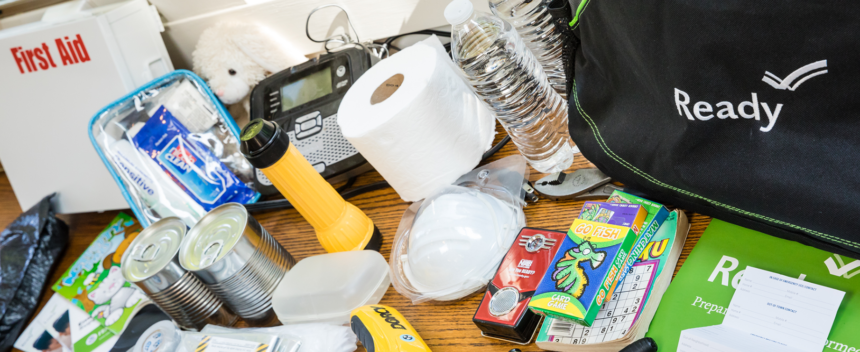What would you do if the power went out unexpectedly, or if a family member suffered a sudden injury? Emergencies can happen anytime, and being unprepared can make them even more stressful. Having a well-stocked home safety kit ensures that you can handle unexpected situations with confidence and ease.
In this guide, we’ll walk you through the essential items every home safety kit should include. By the end, you’ll know exactly what to have on hand to keep your home safe and your loved ones protected. Keep on reading!
First Aid Kit: Your Medical Lifeline
A first aid kit is the first thing you should have on hand in case of an accident at home. First aid kits must have bandages, antiseptics, pain relievers, and other essential medical supplies.
Infections can be avoided by treating minor injuries, such as cuts and burns, right away. Having a first aid kit nearby allows you to react quickly in the event of an emergency.
A quality first aid kit should also contain gauze, medical tape, and tweezers for removing splinters or debris. If someone in your household has allergies, make sure to have antihistamines and an epinephrine injector on hand if needed.
Make sure to check your kit regularly to replace any medications that have expired. Put it in a place where everyone in the house can get to it without any trouble.
Flashlights and Extra Batteries: A Must for Power Outages
It can be dangerous to move around your house when the lights go out. A good flashlight allows you to see clearly and avoid obstacles.
Flashlights should be kept in several places, such as the kitchen and bedrooms. Rechargeable flashlights are useful, but battery-powered flashlights are the best option.
If you have spare batteries, you can be sure that your flashlights will function when you need them. Store them in a dry place that is easy to access. Think about purchasing hand-crank flashlights as a backup plan.
LED flashlights are a dependable option because they produce a brighter light and use less energy. In the event of an emergency, a flashlight can also be used to signal for assistance.
Non-Perishable Food: Staying Nourished During Emergencies
It can be hard to get fresh food during natural disasters and power outages. Keeping a supply of non-perishable food items on hand guarantees that you and your family will have something to eat in case of an emergency. Canned goods, dry foods, and protein bars are all excellent options.
Be sure to pack a manual can opener in your kit. Select foods that are simple to prepare and need little to no cooking.
Keep food in a cool, dry location and check the expiration dates regularly. If you have pets, make sure to remember to buy their food. It is a good idea to have enough food to last for at least three days in case of an emergency.
Clean Water and Purification Methods
Water is essential for living. For a minimum of three days, ensure that each person has at least one gallon of water every day.
Store water in a cool, dark place to prevent it from becoming contaminated. Water purification tablets and filters are great alternatives if your stored supply runs out.
Boiling water is another effective method for purifying it, if necessary. Portable water filters can eliminate dangerous bacteria from sources of water that are not safe.
Consider storing bottled water in a different location so that it is more convenient for you to access. If you have enough space, keep larger water containers available so you can refill them when necessary. It is important to stay hydrated in emergencies, so always have a sufficient supply of clean water available.
Emergency Contact List: Communication is Key
In case of an emergency, it is crucial to know who to reach out to. Be sure to have a written list of emergency contacts that includes phone numbers for family members, doctors, and emergency services.
Store one copy in your safety kit and another in a location that is easily accessible to you. Be sure to give the contact information of neighbors who can help.
A laminated list will be more long-lasting and easier to read. Keep a battery-powered or solar-powered phone charger nearby so that you can make phone calls if you need to.
If possible, save your contacts on your phone and write them down as a backup. Teach family members how to use emergency contacts most effectively. If you have important numbers readily available, you can save yourself a lot of time in the event of an emergency.
Multi-Tool and Basic Supplies
In an emergency, a high-quality multi-tool can replace the need for several different tools. It could include a knife, screwdriver, pliers, and other tools. You will be able to handle minor repairs and emergencies if you have one in your home safety kit.
You should also make sure to pack basic supplies like duct tape, rope, and matches. These items can be used to secure loose objects, start fires for warmth, or repair broken items.
A whistle is a useful tool for getting help when you need it. Put your tools and supplies in a waterproof container so that they do not get damaged. When you have a wide range of tools at your disposal, it is significantly easier to deal with emergencies.
Blankets and Warm Clothing: Staying Warm and Comfortable
During extreme weather, it is crucial to stay warm. Be sure to pack extra blankets, gloves, and thermal clothing in your safety kit. If the power goes out during cold weather, there is a high chance of getting hypothermia.
Thermal blankets are lightweight and do a good job of trapping body heat. Keep extra socks and hats on hand to stay warm.
If there is enough space, bring a sleeping bag to keep you warm. Do not use gas-powered heaters indoors to prevent carbon monoxide poisoning. If you are prepared for cold weather, your family will feel more comfortable and secure.
Personal Hygiene Items: Staying Clean in Emergencies
It is crucial to maintain cleanliness to stay healthy, but people frequently forget to do so before an emergency. Include items such as soap, hand sanitizer, toothpaste, toothbrushes, and feminine hygiene products in your kit.
If you don’t have any water, wet wipes and disposable washcloths can be useful. You can use trash bags and plastic gloves to help you dispose of garbage. A small bottle of disinfectant can be used to clean wounds or surfaces.
Put everything in a bag that cannot be opened to keep things tidy. Maintaining cleanliness during emergencies reduces the likelihood of illness and ensures that you and your family are more comfortable and healthy.
If you don’t have any water, wet wipes and disposable washcloths can be useful. Bring trash bags and plastic gloves to assist you in disposing of the garbage.
You can use this small bottle of germ killer to clean cuts or other surfaces. Put everything in a bag that cannot be opened to keep things tidy. Keeping yourself clean during an emergency can help you avoid getting sick or feeling pain.
Fire Extinguisher: Preventing Small Fires from Spreading
Because fires can start and spread quickly, having a fire extinguisher is an important safety measure for your home. Place one in a key location, such as the kitchen, garage, or near heating equipment.
Make sure that everyone in the house knows how to use it. They should know how to pull the pin, aim at the base of the fire, squeeze the handle, and sweep from side to side.
To ensure that the fire extinguisher is functioning properly, check it regularly to make sure that it has the correct amount of pressure and that it has not expired. You can help prevent small flames from turning into big fires if you have a working fire extinguisher.
Make sure to check the pressure gauge and the expiration date regularly. Choose a fire extinguisher that is appropriate for your home because there are various types of fire extinguishers for different kinds of fires.
Put your hand over small flames, as they can rapidly develop into larger fires. A fire extinguisher can save lives and prevent a lot of damage from occurring.
Important Documents: Keeping Critical Information Safe
Identification cards, insurance policies, and medical records are just a few of the important documents that you should keep copies of in a waterproof container. These being easy to get to can make recovery much smoother after an emergency. A secure cloud service and an encrypted USB drive are also good places to keep digital backups for extra safety.
Also included should be important papers like birth certificates, property deeds, passports, and cash for emergencies. If there is a sudden evacuation, make sure they are easy to get to.
That’s why it’s important to keep these documents up to date. They can save you time and stress in an emergency if you put them all in one place. You and your family will be able to get back on your feet quickly and easily after something unexpected happens if you take these steps.
Pet Supplies: Keeping Your Furry Friends Safe
If you have pets, keep in mind their needs. Make sure to include extra food, water, and any medications your pet may require in your kit. Having a leash, a carrier, and identification tags is also essential.
If your pet is feeling anxious during an emergency, you can help them feel more comfortable by giving them a small blanket, a favorite toy, or even a piece of clothing that smells like you. You should have enough food and water to last for a few days, as well as any medications you may need.
Be sure to pack extra collars, trash bags, and a sturdy leash or carrier to ensure safe transportation. Your identification tags and microchips should have the most current information on them in case you get lost.
Consider purchasing a food and water dish that can be folded up for convenient feeding. Make sure to bring the appropriate food if your pet has special dietary requirements.
If your pet gets lost, having a recent picture of them in your emergency kit can help people locate them. Place all of your supplies in a waterproof bag that is simple to carry. Being aware of your pet’s needs in advance and being prepared to fulfill those needs can help keep them safe in an emergency and prevent them from experiencing unnecessary stress.
Items You Shouldn’t Overlook
If you need to use your safety kit in an emergency, it is essential to have extra keys, local maps, a compass, and some cash in case ATMs are not available. Make sure you have these items, as they could be very important in an emergency, even if you might forget about them.
You can still receive accurate weather reports from a hand-crank or battery-powered radio in the event of a power outage. Make sure to have additional prescription medications available so that treatment can continue without interruption.
You can quickly repair clothing and equipment with a simple sewing kit. It is also important to include waterproof matches and a whistle for calling for help in case of an emergency.
Being prepared for an emergency means making careful plans in advance and packing top emergency essentials items that can make a difference when something unexpected occurs. In addition to being a smart decision, having a well-stocked safety kit is essential for protecting yourself and your family.
Why a Home Safety Kit is Essential
Having a home safety kit on hand makes you feel calm because you know you’re ready for anything. Every item has a use, from first aid kits to food supplies.
Accidents can happen at any time, but being ready for them will help you handle them well. Make a reliable safety kit to stay ahead of danger and keep your family safe.
Did you like this guide? Great! Browse our website for more!















